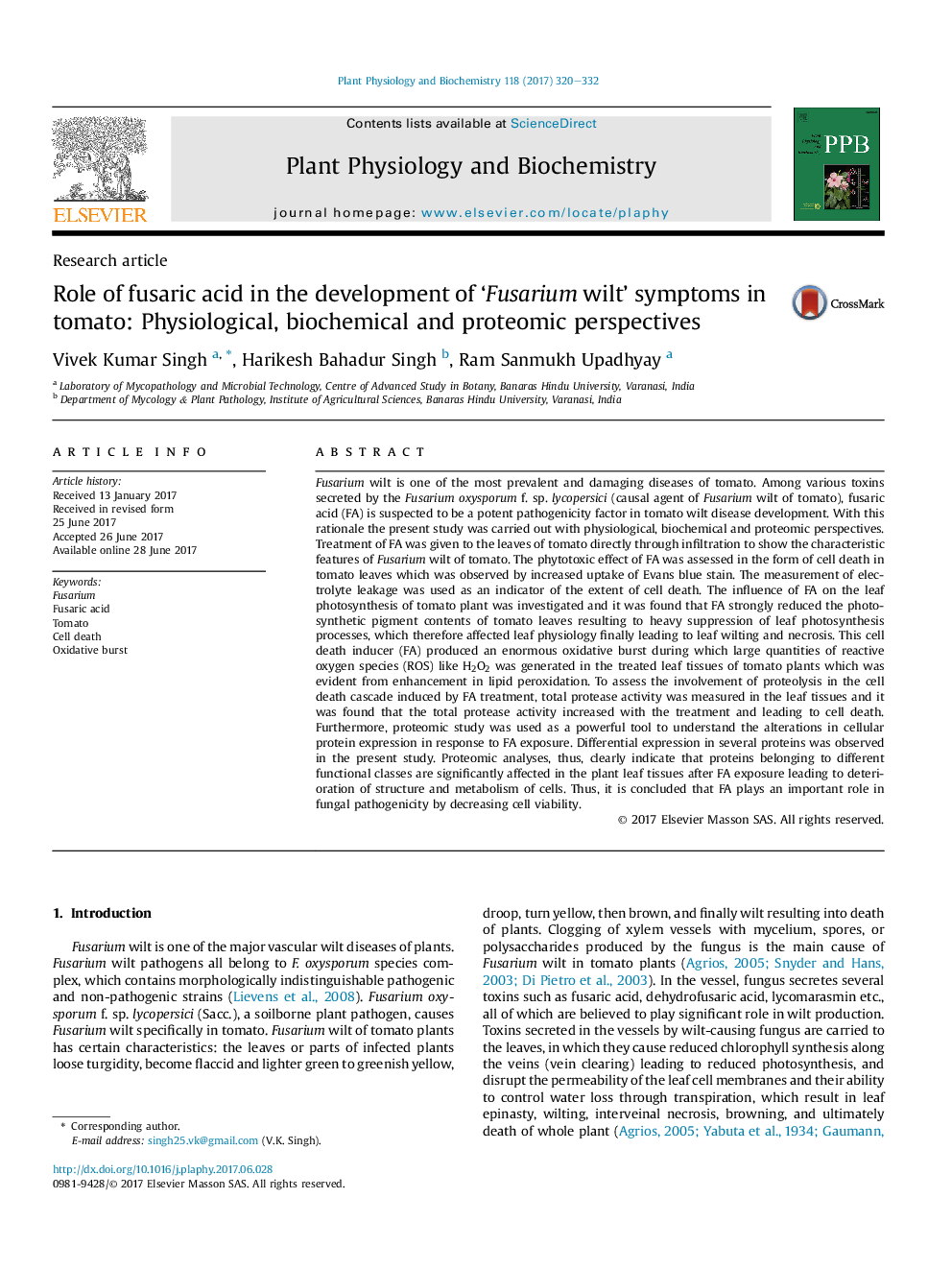| کد مقاله | کد نشریه | سال انتشار | مقاله انگلیسی | نسخه تمام متن |
|---|---|---|---|---|
| 5515447 | 1541903 | 2017 | 13 صفحه PDF | دانلود رایگان |

Fusarium wilt is one of the most prevalent and damaging diseases of tomato. Among various toxins secreted by the Fusarium oxysporum f. sp. lycopersici (causal agent of Fusarium wilt of tomato), fusaric acid (FA) is suspected to be a potent pathogenicity factor in tomato wilt disease development. With this rationale the present study was carried out with physiological, biochemical and proteomic perspectives. Treatment of FA was given to the leaves of tomato directly through infiltration to show the characteristic features of Fusarium wilt of tomato. The phytotoxic effect of FA was assessed in the form of cell death in tomato leaves which was observed by increased uptake of Evans blue stain. The measurement of electrolyte leakage was used as an indicator of the extent of cell death. The influence of FA on the leaf photosynthesis of tomato plant was investigated and it was found that FA strongly reduced the photosynthetic pigment contents of tomato leaves resulting to heavy suppression of leaf photosynthesis processes, which therefore affected leaf physiology finally leading to leaf wilting and necrosis. This cell death inducer (FA) produced an enormous oxidative burst during which large quantities of reactive oxygen species (ROS) like H2O2 was generated in the treated leaf tissues of tomato plants which was evident from enhancement in lipid peroxidation. To assess the involvement of proteolysis in the cell death cascade induced by FA treatment, total protease activity was measured in the leaf tissues and it was found that the total protease activity increased with the treatment and leading to cell death. Furthermore, proteomic study was used as a powerful tool to understand the alterations in cellular protein expression in response to FA exposure. Differential expression in several proteins was observed in the present study. Proteomic analyses, thus, clearly indicate that proteins belonging to different functional classes are significantly affected in the plant leaf tissues after FA exposure leading to deterioration of structure and metabolism of cells. Thus, it is concluded that FA plays an important role in fungal pathogenicity by decreasing cell viability.
Journal: Plant Physiology and Biochemistry - Volume 118, September 2017, Pages 320-332